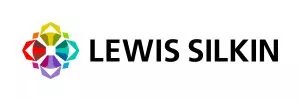- in South America
- within Cannabis & Hemp, Law Practice Management and Criminal Law topic(s)
- with readers working within the Retail & Leisure industries
The UK's new less healthy product advertising rules restrict ads for "identifiable" less healthy food and drink products across TV, ODPS and paid-for online placements. Alongside exemptions for SME's and media outside scope (such as radio, press and posters), the regime creates an important safe harbour for "brand advertisements."
In this article, we explain how the Brand Advertising exemption works under the ASA's guidance and Section 7 of Annex C of the ASA's implementation guidance, and where it applies. It's worth noting that the consultation on the guidance closed on 9 October, and we are waiting for the final version. However, we don't expect it to change too much.
When is a product identifiable and in scope of the restrictions?
The statutory test is whether persons in the UK could reasonably be expected to identify an advertisement as being for a less healthy product. If the product is not "identifiable" as such, the restriction does not apply. If it is identifiable, it may still be out of scope if an exemption applies. The ASA assesses ads case-by-case from the perspective of a reasonably well-informed, observant, and circumspect consumer, placing weight on what people are likely to perceive the ad is for.
What is a "brand advertisement"?
A brand advertisement is one that promotes a brand, including the brand of a range of products, provided it does not cross into content that is deemed to depict a specific less healthy product. A "range of products" means a group of related food or drink products, including variants such as different flavours, but not products differentiated only by pack size or packaging format.
This means you can promote corporate or range branding: logos; livery; straplines; colourways; characters and jingles without automatically triggering the less healthy product restrictions, so long as the content does not depict a specific less healthy product as described below.
When the exemption does not apply: The three carve-outs.
The Regulations set out three circumstances where an ad will not qualify as a brand advertisement. If any of these apply, and the identifiability test is met, the ad is in scope of the restrictions.
- Depiction of a specific less healthy product. If the content depicts a specific less healthy product, the exemption does not apply. Depiction covers name, text, imagery, logo, audio cue, jingle, brand character or other branding technique or combination of branding techniques. The "specific product" must be capable of being purchased and differentiated from other products, other than by pack size/packaging format. Direct pack shots, distinctive shapes, unique design features, or product-specific characters are likely to be problematic. Generic or abstract product imagery can be acceptable if it is sufficiently distinct from any specific less healthy product. Be cautious about combinations of branding that, taken together, effectively point to a specific variant.
- Brand names that are also names of specific less healthy products. An ad that promotes a brand whose name is the same as the full name of a specific less healthy product will not benefit from the exemption. However, the exemption will still apply if the full product name is the name (or included in the name) of a company, franchise or other commercial entity established and holding that name immediately before 16 July 2025, or the name of the brand of a range that was in use for marketing, advertising or retail sale immediately before that date and held that name then.
- Realistic imagery indistinguishable from a specific less healthy product. The exemption does not apply where the ad includes a realistic image of food or drink itself (not just packaging) that is visually indistinguishable from a specific less healthy product. "Realistic image" includes photographs, video, or highly realistic renders. If showing an unpackaged item from a range that includes both less healthy and non-less healthy variants that look the same, include additional information to make clear the product shown is a non-less healthy variant.
What is the relationship with the HFSS guidance?
The ASA's broader HFSS guidance also differentiates brand advertising from product advertising. Advertisers should note that the use of branding in an ad, even if the product itself doesn't feature, could have the effect of promoting a specific HFSS product. The word "branding" is used in its widest possible sense and can include logos, marks, characters, colours or straplines that are directly associated with a particular product, range of products or company.
What are the practical pointers for compliant brand ads?
So what can you do to bring your advertising within the brand advertising exemption? We suggest the following:
- Create advertising for the brand, not the specific product.
- Focus on corporate identity or range-level branding without including product-specific cues that uniquely identify a less healthy variant.
- Use generic or stylized imagery where possible, and avoid pack shots, distinctive product shapes, product-specific characters, or jingles tied to a single less healthy product.
- If your brand name is identical to a specific less healthy product, consider whether a grandfathering route applies; if not, range or corporate branding without that name may be safer. When using realistic food imagery, either avoid close likeness to a specific less healthy product or clearly signpost that the featured item is a non-less healthy variant.
Finally, don't forget that even if an ad is caught by the Regulations, the final step is to check how the product scores on the Nutrient Profile Model.
The content of this article is intended to provide a general guide to the subject matter. Specialist advice should be sought about your specific circumstances.
[View Source]




